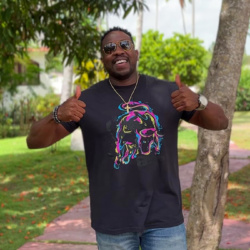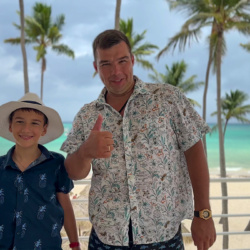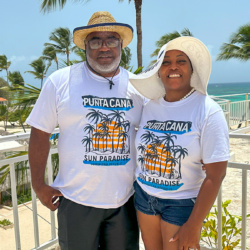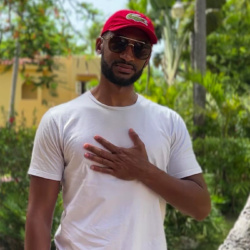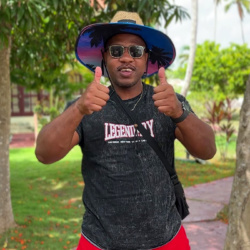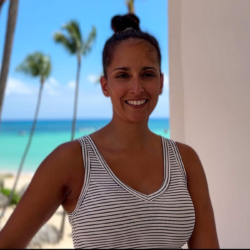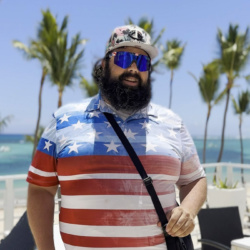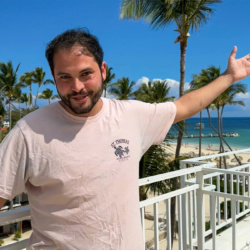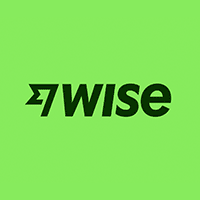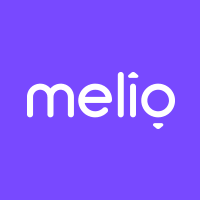Surfing lessons in Punta Cana
Get in Touch with Our Team!
Show categories
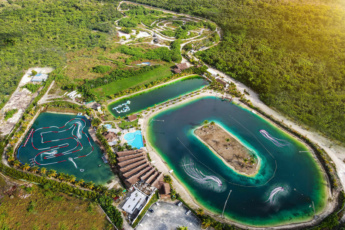
Best 7-in-1 Waterpark Tour in Punta Cana 2025 – Jet Ski, Aqua Karts, Buggy, Party Boat, Zipline
from $209 View Details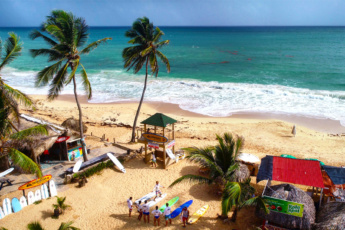
VIP Surfing in Punta Cana – «Surfing in Paradise», Uvero Alto Beach
from $139 View Details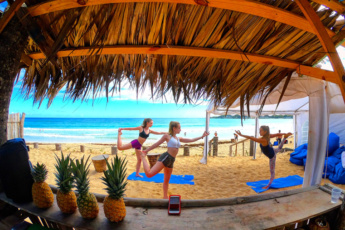
Excursion to Surfing School in Punta Cana – «Chill Out in Paradise»
from $45 View DetailsPunta Cana as an ideal place for surf lessons
Over the past few years, the Dominican Republic has established itself as an excellent resort not only for a beach and lazy holiday but also as a country with the possibility of extreme pastime. With its pristine waters, soft sands and waves of all sizes, it's a place every surfer should visit at least once!
Surfing here is an experience you will never forget. And even if you can’t, right during your vacation, you can take surf lessons in Punta Cana and conquer the waves of the Caribbean Sea!
First of all, Punta Cana is known to everyone as an excellent place for recreation and tourism. It is perfect not only for lovers of the famous rum, cigars and coffee, but also for those who prefer outdoor activities. The resorts of this country constantly receive millions of tourists from all over the world, many of whom are big fans of such water activities as surfing, diving and other sports activities.
What is so special about Dominican surfing?
First, those who like to “ride” the wave come here because the water remains warm enough all year round. Even in winter, its minimum temperature is +26°C.
It is during the winter period of the year that this sport is in full swing because it is then that the waves reach their record heights (sometimes up to 6 meters). Surfers at this time can not only ride for fun but also take part in various competitions. However, this applies more to professionals.
Everyone can find precisely what they need without much effort. About 30 surf spots in the Dominican Republic provide services for tourists with various experience levels. Here you can also easily find both right-handed and left-handed boards.
The best place for surfing in Punta Cana
Especially popular among surfers is Macao Beach, which is located 20 km from Punta Cana. This is because it is located away from the main skiing areas and from civilization in general. This is a quiet, secluded place where you can ski all year round except during tropical storms.
More professional surfers prefer Punta Rucia, Playa Encuentro, El Broke, and other beaches. Here, nature itself has created ideal conditions for the most active surfers. The most desperate can test their strength in the spot with the self-explanatory name Destroyer (destroyer). Here the wavelength can reach about 150 meters!
Where to take surf lessons in Punta Cana
If you have never tried to conquer the waves at all but want to try, many schools are at your service, where experienced and professional instructors will tell and show everything to the smallest detail. Almost all of them work on the same principle, however, when choosing for yourself, you should not go to the first one that comes across, and also focus on the cost of services.
How to choose surf lessons in Punta Cana
To begin with, you should find out in detail whether this surfing school has official permission, a certificate, and the level of instructors' professionalism. Reading online reviews of tourists who have already been there will not be superfluous. When choosing surf lessons in Punta Cana, consider the following factors to ensure you have a safe and enjoyable experience:
- Look for surf schools or instructors with a good reputation and positive reviews. Check their credentials, experience, and whether they are certified by recognized surf associations.
- Inquire about the safety measures and protocols followed during lessons. Ensure the instructors are trained in first aid and CPR and provide appropriate safety equipment, such as surfboards, leashes, and rash guards.
- Understand the lesson structure and what it includes. Ideally, lessons should cover ocean safety, paddling techniques, standing up on the board, wave selection, and basic maneuvering.
- Inquire about the instructor-to-student ratio to ensure personalized attention and guidance during lessons. Small class sizes allow for more focused instruction.
- Check if the surf school provides surfboard and equipment rentals. If you're a beginner, they should offer appropriate beginner-friendly boards.
- Determine the duration of each lesson and the recommended number of classes. Consider your availability and choose a program that suits your schedule.
- Compare prices among different surf schools, and consider the value you're getting for your investment. Cheaper options may lack experienced instructors or proper equipment, so prioritize quality over price.
- Consider the proximity of the surf school to your accommodation. Choose a location that is easily accessible and convenient for transportation.
- Some surf schools may offer services like video analysis, photo packages, or customized surf trips. Assess if these extras align with your preferences and needs.
- Seek recommendations from locals, fellow surfers, or your property provider. They may have insights and referrals to reliable surf schools or instructors.
If you want to take a risk and try surfing, you can book surf lessons on Macao Beach now! The training is conducted by real professionals who will do everything possible so that you can conquer the wave of the Caribbean Sea in a short time!
What do surf lessons in Punta Cana usually look like?
Lessons on surfing usually take place in the first half of the day, since there is almost no wind at this time. Before lunch there is also water with the most appropriate height and wave speed, which are ideal for beginners. Here you will learn the basics about what waves are, types of wind, and how to behave in a given situation.
If you rent the necessary equipment, then training, as a rule, is already included in its price. If you like the board and everything else from the rental, you can buy it all. You will have to study for 4-5 hours a day. It does not seem very long, but in fact, it is more than enough in terms of physical activity.
Frequently asked questions about
surf lessons in Punta Cana
1. Is Punta Cana good for surfing?
Punta Cana is generally known for being a top surfing destination. Even though Punta Cana occasionally experiences surfable waves, the conditions there aren’t always ideal for experts or seasoned surfers.
If surfing is your main interest, you might want to consider visiting other Dominican Republic locations like Cabarete, which is regarded as the country’s premier surfing destination, or Playa Encuentro, which draws surfers of all skill levels with its reliable waves.
2. Which beach is best for surfing in Punta Cana?
There are a few locations in Punta Cana where you can occasionally find surfable waves. The first one is Playa Macao. It is located 20 kilometers north of the major tourist. It has consistent beach breakers. Surfers of all levels can ride the beach’s left- and right-hand waves.
Comparing Punta Cana to other Dominican Republic sites, including Cabarete or Playa Encuentro, the surf there is frequently less reliable or conducive to surfing. Check the surf reports and speak with informed locals or surf schools for the most recent details on conditions and safety.
3. How many lessons do you need to surf?
The number of lessons depends on several things, such as your degree of physical level, previous experience with water sports, your comfort level in the ocean, and your capacity for balance and coordination. Beginners can anticipate that the following subjects will be covered in their surf instruction:
- Understanding the waves, tides, currents, and potential hazards
- Practicing the pop-up technique to transition from lying down to standing on the surfboard
- Understanding how to distribute your weight and position yourself on the board for stability and control
- Learning how to paddle efficiently and navigate through the water
- Learning to read the waves, paddle at the right time, and catch your first waves
- Developing the ability to ride the wave, maintain balance, and make basic turns.
Becoming proficient enough to surf alone could take as little as a few classes or as long as several years. While some people may feel competent after just a few classes, others may need several weeks or even months of consistent practice and instruction. Practice patience, perseverance, and enthusiasm for learning.
4. What is the temperature of the water in Punta Cana?
In Punta Cana, these temps offer pleasant conditions for swimming, water sports, and relaxing on the beach. Before organizing any activities involving the water, verifying the current conditions is always a good idea. Water temperatures might vary somewhat based on ocean currents and weather patterns.
Average water temperature in Punta Cana by month
| Month | Water temperature (°C) | Water temperature (°F) |
|---|---|---|
| January | 26°C | 79°F |
| February | 26°C | 79°F |
| March | 26°C | 79°F |
| April | 27°C | 81°F |
| May | 28°C | 82°F |
| June | 28°C | 82°F |
| July | 29°C | 84°F |
| August | 29°C | 84°F |
| September | 29°C | 84°F |
| October | 28°C | 82°F |
| November | 27°C | 81°F |
| December | 26°C | 79°F |
5. What is the best month to surf in the Dominican Republic?
The Dominican Republic provides for year-round surfing due to its tropical climate. But if you want to catch big waves, the ideal months to surf are from October to March, especially near Punta Cana. The greatest time to visit is in the winter when fewer people are there and the winds are stronger. Remember, though, that this time frame before hurricane season.
6. Are the waves rough in Punta Cana?
Well, Punta Cana’s waves aren’t often considered exceptionally big or severe. Seas in the region are known for being calm and clear, making them preferable for activities like swimming and snorkeling.
Some conditions, however, can all have an impact on the waves. Although Punta Cana is not a well-known surfing location, occasionally surfable waves are there, especially during specific seasons.
Other Dominican Republic regions, such as Cabarete or Playa Encuentro, are more recognized for their surf breaks and offer more consistent waves for surfing if you’re searching for more difficult and dependable surf conditions.
7. What are the waves like in Punta Cana?
The waves in Punta Cana are typically small to moderate in size. They are generally not very powerful or intense. While you may find occasional surfable waves in Punta Cana, the consistent and ideal surf conditions for experienced surfers are more commonly found in other locations within the Dominican Republic, such as Cabarete or Playa Encuentro.
8. Can you surf at Hard Rock Punta Cana?
The Hard Rock Punta Cana hotel often does not offer direct beach access. The Punta Cana resort is located on a shoreline section with irregular waves unsuitable for surfing. Kayaking, paddleboarding, and jet skiing are just a few water sports and activities guests may participate in at the resort.
You might have to leave Hard Rock Punta Cana and travel to other neighboring beaches, such Playa Macao or other surf places, if you want to surf there. Talk to resort staff or nearby surf schools to learn more about the closest surfable beaches and your alternatives for scheduling surf lessons or vacations.
9. Can you kite surf in Punta Cana?
In Punta Cana, kite surfing is a well-liked water sport. Even while it might not be as well-known for kite surfing as other places like Cabarete, it nonetheless provides chances for fans of the sport to enjoy the activity. Kite surfing is made possible by the steady trade winds and expansive sandy beaches.
There are kite surfing schools in Punta Cana and rental facilities nearby where you may take lessons or rent equipment. For the most recent information on the best kite surfing locations, safety precautions, and any particular rules or limitations that may be in effect, it is always a good idea to consult with nearby kite surfing schools or instructors.
10. Which beach in Punta Cana has less seaweed?
Depending on the weather, currents, and cyclical patterns of nature, there may or may not be seaweed at Punta Cana. Although seaweed can occasionally occur naturally and its amount can change throughout the year, some beaches typically have fewer seaweed problems than others.
In comparison to other adjacent beaches, Bavaro Beach, one of Punta Cana’s busiest beaches, often has less seaweed. For the sake of visitors, the resorts and hotels in the Bavaro region typically preserve the beachfront free of seaweed.
11. Where are the biggest waves in the Dominican Republic?
The northern shore of the Dominican Republic often has the country’s largest waves.
- Cabarete is well known on the country’s northern coast as one of the best surfing locations.
- Playa Encuentro, close to Cabarete, has dependable surf breaks and bigger waves appropriate for surfers of all abilities.
- Playa Preciosa in Las Terrenas and Playa Grande in Cabrera are popular surfing locations with larger waves.
Throughout the year, there can be a wide range in wave conditions because of things like weather patterns and surge direction. To receive the most recent information on the state of affairs, it is advised to check local surf reports and speak with knowledgeable surfers or the neighborhood surf schools.




